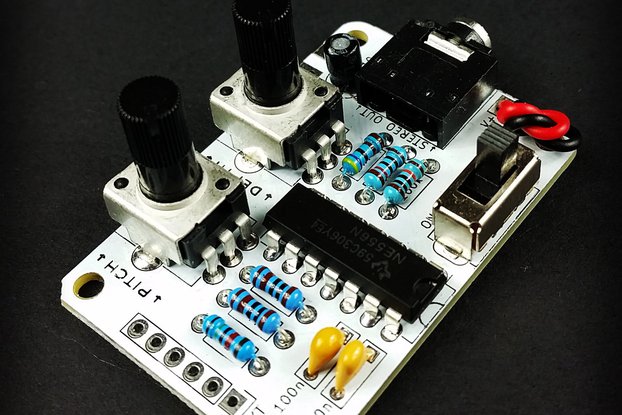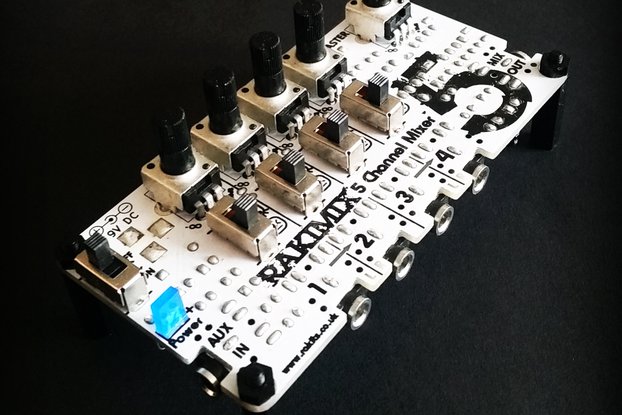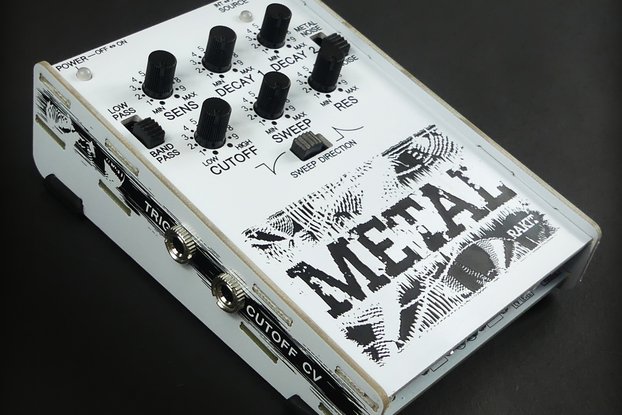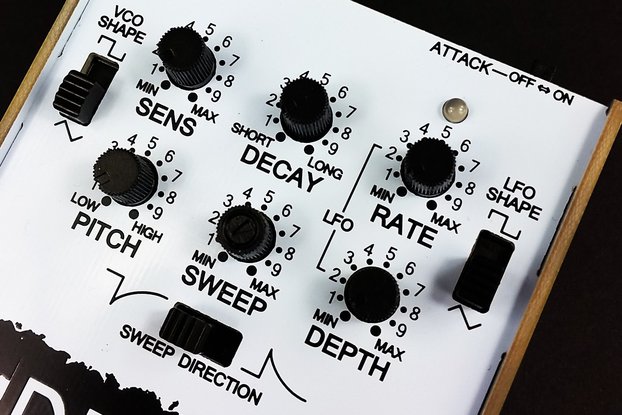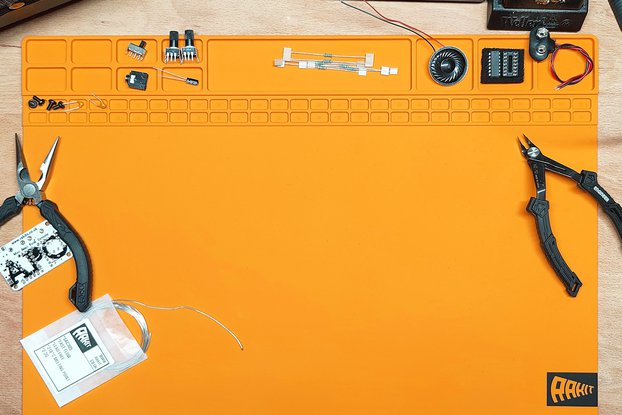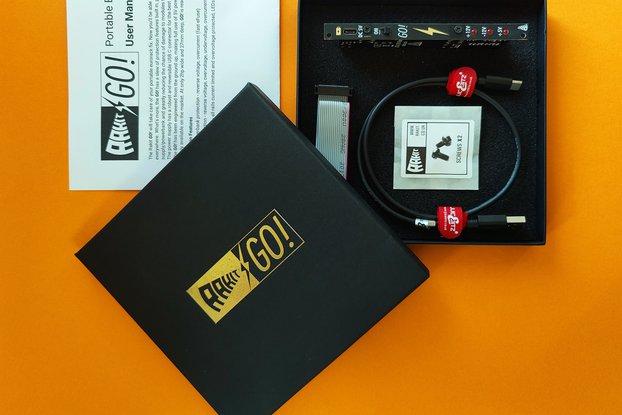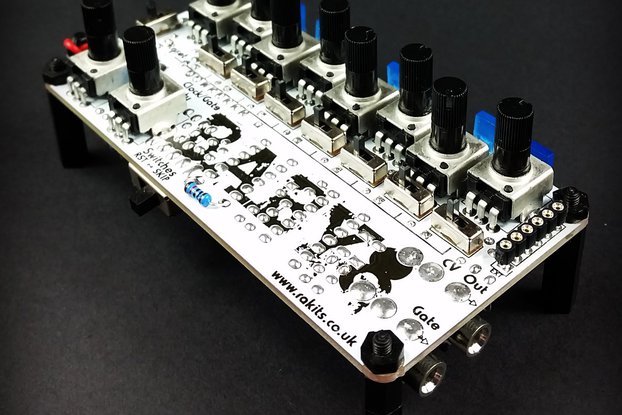OMG what a satisfying build! Build document is OUTSTANDING!
For Rakit Drum DIY Synth Kit/Assembled - Amdek PCK-100
Wow! The Rakit Drum Synth kit was a pleasure to build, and is so much fun to play!
I had the wise foresight to order a bunch of items from Rakit, and the package was crammed with all kinds of bonus swag that had me smiling ear-to-ear! An origami IC chip kit, several very funny stickers, some very cool logo stickers, and.... CANDY!
[ THE UNBOXING ]
When I first opened the package to inspect the contents, I was a little intimidated by the number of resistors in the BOM. My anxiety was eased by the fact that the resistors all came packaged in a small waxed paper envelope which was printed with large COLOR ILLUSTRATIONS of the resistors and their corresponding values.
The PCBs came in two sheets: the front panel, and a multi-piece snap-apart panel with the base and side panels. These sub-PCBs snapped cleanly along the pre-scored lines, and I was required to do LITERALLY no finishing of the edges. Could not have been easier.
[ THE BUILD ]
I followed the build document and assembled the unit in no time! (perhaps two hours, at a leisurely pace). When it came time to install the myriad resistors, I was very very impressed with the level of detail built into the online build document. There is literally an interactive map of the resistors, such that when you click on the resistor value on the table list, every resistor's place of that value stands out proud in color on the black and white outline depiction of the board! Having this aid made this tricky phase of the build process very confidence-worthy.
I was also impressed at the level of detail put into consistent component footprints, The authors/designers noted that for polarized components, there is a square solder pad, and a round solder pad, and they kept the convention consistent throughout the entire kit.
Once fully assembled, the unit is quite compact. It's footprint is about the size of a large computer mouse.
If you are considering this as your first intermediate-level build, I think you should go for it. It was my first, and I'm very happy with what I was able to produce.
[ THE SOUNDS ]
This little gadget really defies being defined as a "drum", but I suppose they had to name it something! With its simple envelope parameters (decay knob, sweep knob, sweep direction switch, and Attack on/off switch) you can achieve sounds which range from percussive, to springy. This box is particularly good at making a distorted kick drum sound that would be right at home in an in-your-face chest-collapsing 4/4 hardcore beat. And so far, I've only been describing what the square wave oscillator can do. It also has a triangle wave! The triangle wave can make some more neat percussive sounds! Wanna make an 808 Cowbell? Try this!
VCO: Triangle
Pitch: 5.5
Decay: 3-7 (5 is right up the middle and works well)
Sweep: 0
LFO Rate: 9.5
LFO Shape: Triangle
LFO Depth: 6 (go a little higher than 6 and it starts to sound like a steel drum, go much higher for some gnarly FM-esque tones!)
Notes about the LFO: I think this LFO goes as low as 4Hz (if I recall correctly), and once you get the LFO rate knob above 3, the LED (oh yeah, there's an LED that telegraphs the LFO's rate) appears steady-on, which suggests somewhere around 30Hz, and I'm guessing max has to me somewhere around 100Hz. With an LFO that fast, you can actually produce some pretty legit FM synthesis sounds. I don't know if this is technically correct, but the math seems to make sense in my head.
The kit includes a barrel-jack adapter with a 9V battery clip, which is nice. I can just leave the clip on the battery and chuck it in my bag without having to worry about short-circuits. When I want to have a play, I just plug in and start tapping.
So, yeah, it has a line level mono out, which sounds great through external amplification. When I plug my headphones in, I get a faint signal in one ear, but I don't suppose it's designed to be played that way. It has a mono jack input for trigger (as an alternative to the piezo tap sensor built into the front panel) which works well, and it has a mono jack input for pitch CV. I don't know if the pitch follows the 1V/octave convention, but I can confirm that it does indeed work!
Now that I've finished writing this review, it's clear to me that I really want to order another one! You might as well add 2 to your cart ;)

